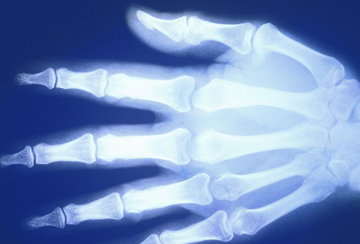Detecting osteoporosis early is important and can help prevent fractures from occurring in the first place. Download and complete this checklist to determine if you are at risk for osteoporosis, and talk to your doctor. Having your bone mineral density (BMD) tested will help your doctor determine whether or not you have osteoporosis.
Osteoporosis Canada recommends that all women and men over the age of 65 and all individuals who have experienced a fragility fracture or have risk factors for low bone density undergo a BMD test.
Bone mineral density testing is safe and painless. It provides a measure of the density of your bones. The machines used to perform this test are known as bone densitometers.
You may have heard of a bone mineral density (BMD) test. This is also known as a “DEXA” or “DXA” test (Dual Energy R-Ray Absorptiometry). This is a safe, painless way to measure the density of your bones. During the test, you lay fully clothed on a table while small amounts of x-rays are transmitted through your bones. The amount of x-rays passing through your bones is measured. The greater the amount of x-rays that pass through, the less dense your bones are. The density of bones is called bone mineral density (BMD).
The test results are given as a “T-score”. The T-score is a measuring system used to compare your bone density to an established standard (that of a young adult of the same gender). The higher your T-score, the more dense your bone. A T-score above -1 is considered normal; a T-score between -1 and -2.5 indicates low bone mass (osteopenia); and a T-score below -2.5 indicates osteoporosis.
What the T-score means for you will also depend on how old you are when that T-score is assessed. For example a T-score in a 50-year old of -1.5 might not be as worrisome as the same score in a woman aged 65. Physicians will use your T-score and age, along with other risk factors you may have to assess your risk for fracture.


